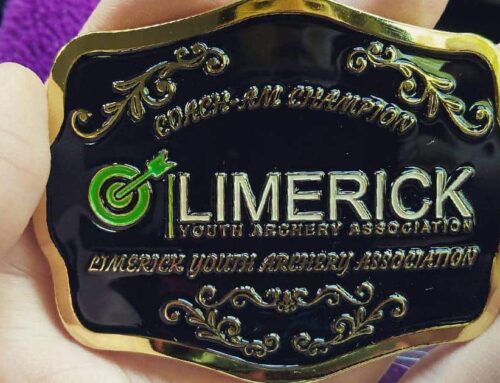Over the past thirty years, 3D Archery has exploded in popularity. This segment of Target Archery transforms the two-dimensional animal targets of years past into life-size three-dimensional animals. Targets are often placed in a wooded setting to simulate hunting scenarios.
This Blog Post will teach you How To Score 3D Archery Targets for IBO, ASA, and Local Events. We’ll also look at popular commercial-grade 3D Archery Targets you are likely to encounter on the course.
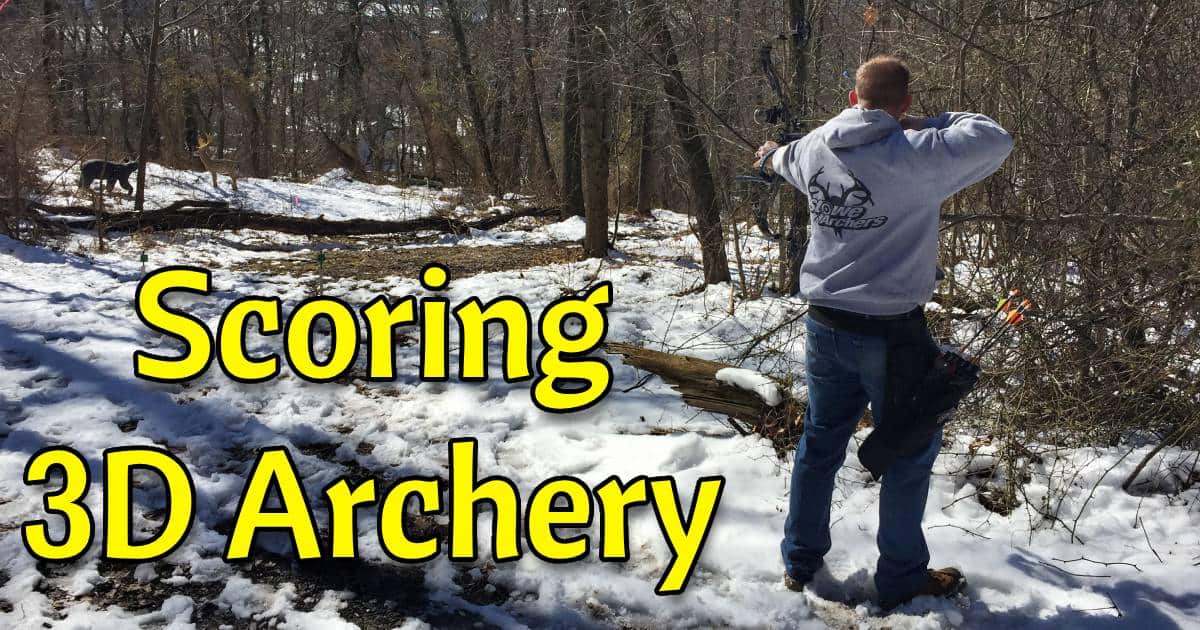
Table of Contents
How to Score 3D Archery for IBO
The IBO (International Bunting Organization) utilizes four scoring zones. The smallest zone inside the vital is scored at 11 points. The next largest zone is scored at 10 points, and the largest zone within the insert is scored at 8 points. An arrow anywhere else on the target (except for the antler, hoof, or accessory) is scored at 5 points. A missed target score is 0 points (zero).
It is important to note that an arrow must only touch the scoring line to receive the higher point value.
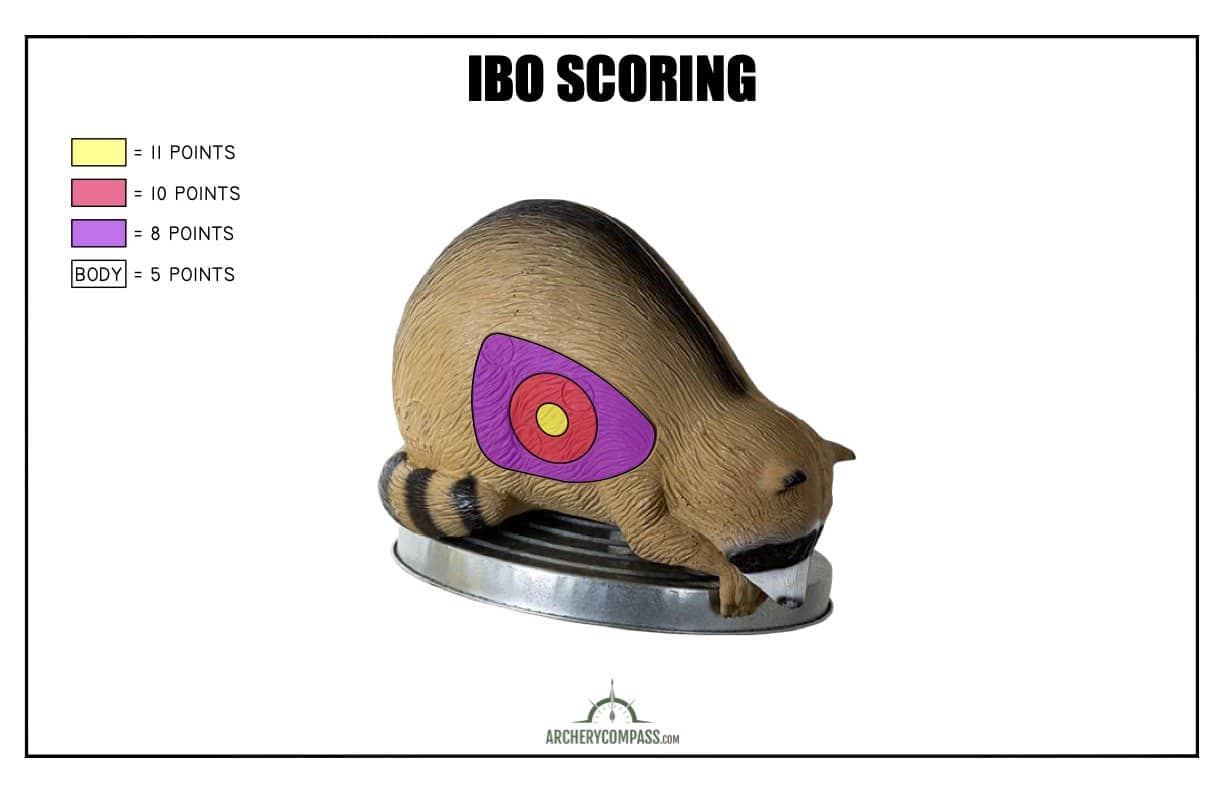
Below is an excerpt from the IBO Rulebook with more scoring procedure details. For a complete set of rules, please visit the IBO Website.
II. TARGETS AND SCORING AREAS
A. TargetsIBO Rulebook – https://iboarchery.com/wp-content/uploads/IBO-Rules.pdf
- At all IBO-sanctioned shooting events, targets shall consist of 3-D type animal targets having
official IBO scoring areas.- Host clubs may mix the size of the animals so long as the targets have official IBO scoring areas.
- Targets shall be set at unmarked distances. The approximate maximum distance for each stake
shall be as follows:
a. Blue Stake: 50 yards (45.72 meters)
b. Green Stake: 45 yards (41.15 meters)
c. Red Stake: 40 yards (36.70 meters)
d. Yellow Stake: 35 yards (32 meters)
e. Orange Stake: 30 yards (27.43 meters)
f. White Stake: 25 yards (22.86 meters)
g. Neon Pink Stake: 20 yards (18.29 meters)- Targets should be set so they are distinguishable with their vital areas (8 ring)
unobstructed.
Care shall be taken when setting targets not to over rotate or excessively lean the targets to ensure that the entire vital area can be safely shot.
B. Scoring Areas
For all IBO-sanctioned shooting events, the targets shall have scoring areas as follows:- An “11” ring consisting of a circle centered within the 10 ring. The circle size should be approximately twenty five percent (25%) of the size of the 10 ring.
- A 10 ring consisting of a circle inside the vital area.
- A vital area (8 ring) that roughly approximates the heart, lung, and liver area of the appropriate animal.
- The remainder of the animal shall be considered a “body” except as set out in Paragraph 5 below.
- An arrow embedded in the horn of an animal, not touching body color, is considered a miss and is scored as a zero. Targets with legs or hooves of a different color than the main body will still be considered as body color for scoring.
- Some targets have material surrounding the actual outline of a target animal. This additional material will NOT be counted for score.
How to Score 3D Archery for ASA
The ASA (Archery Shooters Association) utilizes five scoring zones. The vital contains two small rings which are scored at 12 points. These are unique in that the lower 12 is in play by default – if it is crowded and you would like to shoot the upper 12, it must be announced to your group. The larger scoring zone is worth 10 points, with the remainder of the vital being worth 8 points. An arrow anywhere else on the target (except for the antler, hoof, or accessory) is scored at 5 points. A missed target score is 0 points (zero).
After the qualification round is complete, archers may choose to shoot the 14 ring for maximum points.
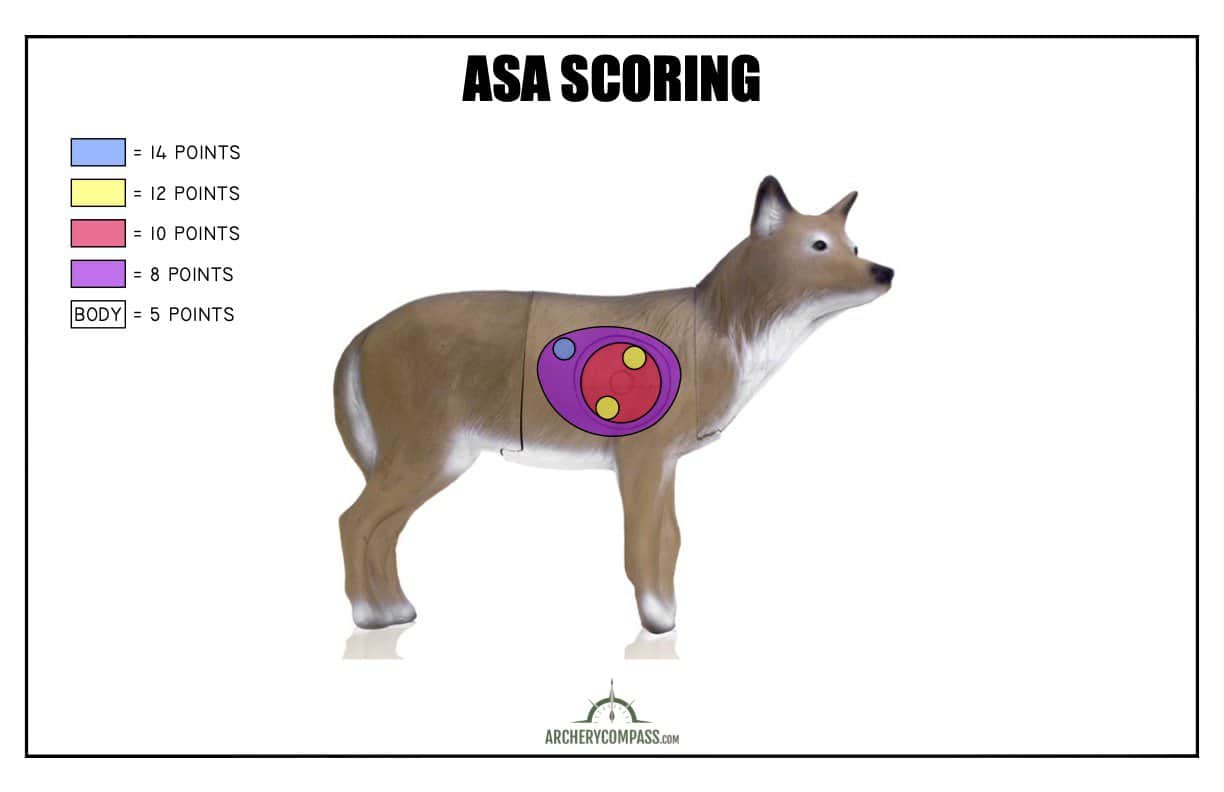
Below is an excerpt of the ASA Rulebook with more scoring procedure details. For a complete set of rules, please visit the ASA Website.
ASA Pro/Am Rulebook – https://asaarchery.com/rules/asa-pro-am-rules/
- SCORING:
- All arrows must remain in the target until all arrows are scored: (1) The arrow shaft must be touching a portion of the next highest scoring line to be scored for the higher value. (2) Scorers are allowed to use their binoculars and may also reflect or shine a light on the target at the time of scoring to aid in the process. (3) The status of any doubtful arrows must be determined before drawing any arrow from the target. (4) The score is based on the status of the arrow while all other arrows remain in the target. (5) Arrows may not be removed until a scoring judgment has been made and no changes may be made to the score after removal of an arrow. (6) Targets may not be moved or dislodged for scoring purposes and shall be returned to their proper upright position upon removal of the arrows.
- Scorers will agree on a score for each arrow and call out the results to be recorded on the respective shooter’s scorecards by their Scorekeepers. If the two designated scorers cannot agree on a score another member of the group will break the tie other than the shooter whose arrow is being scored. In classes with only three shooters in the group the shooter will receive the higher score of the two scorers. ASA Range Officials will not make arrow calls except when a group has only two shooters, or during special competitions.
- Target “Pass Through” or “Rebound” without striking another arrow: (1) Arrows passing through the front of, but still in, the target will be pushed back and scored; (2) If the group agrees that an arrow passed through the targets insert seam the shooter will be given a score based on the point of pass through not to exceed eight (8) points; (3) If the group agrees and confirms that the arrow actually passed through the target scoring area due to the high number of arrows that had been shot at the target, the range official is to be notified to have the core replaced and the shooter will be allowed to take the score where the “pass-through” occurred as determined by the group up to a maximum score of ten (10) points; and (4) If the group agrees that the arrow rebounded out of the target without striking another arrow the shooter will be allowed to take the score where the rebound up to a maximum of ten (10) points. Special Note: A score of 12 will not be permitted under sections 2, 3 or 4 of this paragraph.
- An arrow that glances off and goes past the target will be scored as a “0” (includes glancing off a plastic leg.)
- Any arrow embedding (“Robin Hood”) in the nock of another arrow will be scored the same as the arrow it is embedded in.
- Any arrow rebounding backward off another Arrow (a “Robin Hood” that strikes and damages another arrow and does not proceed toward the target but bounces back) will be scored the same as the arrow it struck, provided the damaged arrow can be identified.
- Any arrow deflecting by contact with another arrow already in the target and still proceeding toward the target will be scored where it lies in the target, or a maximum of five (5) points if it is not in the target.
- Arrows in the corresponding area of the target will be scored with point values of 5, 8, 10, or 12.
- If time and weather permit, scoring ties for first place that cannot be broken by bonus rings an ASA Official will use the “Closest-to-the-Center of the 10-ring” tie-break procedure where each shooter will shoot one arrow and the arrow that is closest to the center of the 10-Ring, regardless of score, will receive an additional bonus ring added to their score. If for any reason a tiebreaker cannot be held, and for all scores that are tied by score and bonus rings, the sum of the prize money for the tied places will be divided equally between the shooters.
How to Score 3D Archery for NASP
NASP (National Archery in the Schools Program) partners with IBO and uses Rinehart Targets with Standard Inserts. While the targets look very similar, they are scored differently. There are four scoring zones. The smallest zone inside the vital is scored at 10 points. The next largest zone is scored at 9 points, and the largest zone within the insert is scored at 8 points. An arrow anywhere else on the target (except for the antler, hoof, or accessory) is scored at 7 points. A missed target score is 0 points (zero).
It is important to note that an arrow must only touch the scoring line to receive the higher point value.
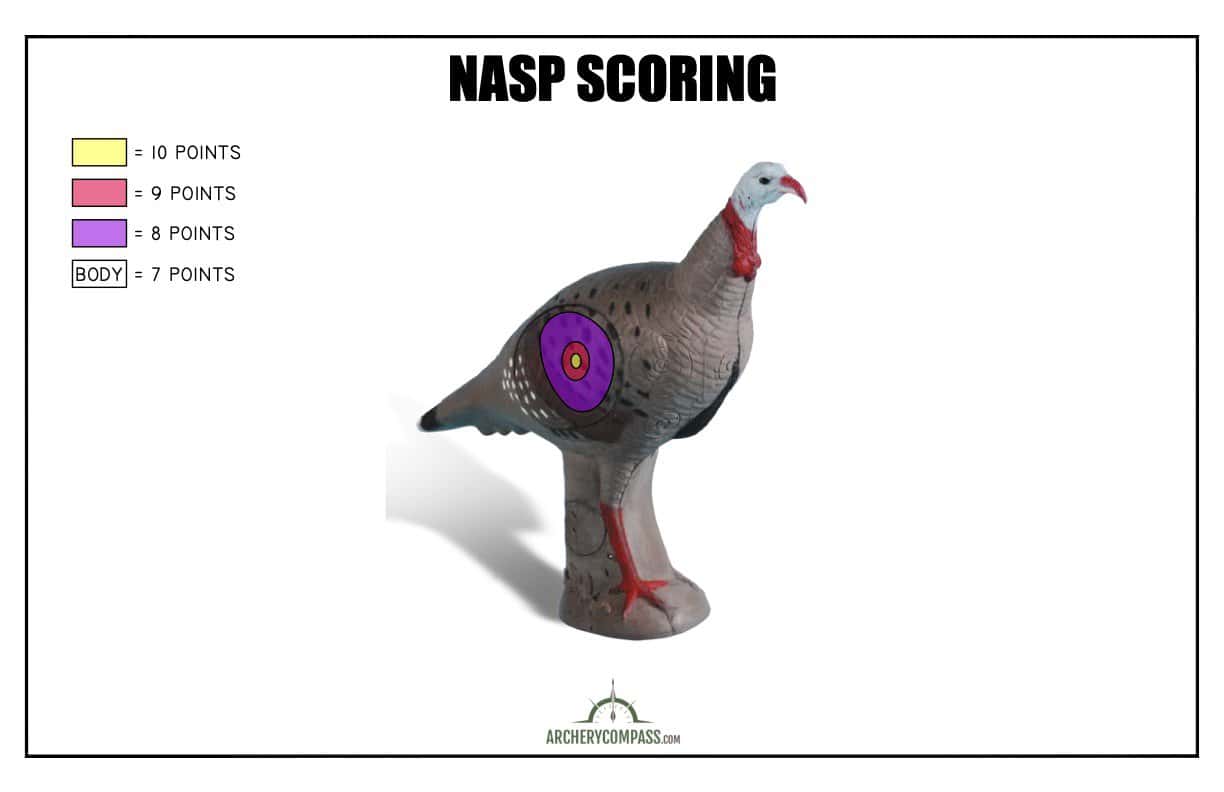
Below is an excerpt from the NASP Rulebook with more scoring procedure details. For a complete set of rules, please visit the NASP Website.
Scoring:
NASP Rulebook – https://www.naspschools.org/wp-content/uploads/3D.pdf
5.1. Only archers and tournament officials will be allowed downrange of the waiting line.
5.2. All arrows should be scored before any arrow, or the target is touched.
5.2.1.Moving or pushing an arrow into the target to affect an arrow’s score violates 5.2.
5.3. The scoring rings are 10, 9, & 8. Any arrow outside the 8-ring but on the animal is scored a 7. Arrows in the horns
(sheep & antelope), antlers (deer), or stump (turkey) are scored zero.
5.3.1. An arrow shaft (not the hole) touching a scoring ring line is awarded the higher point value.
5.3.2. An arrow scores zero (0) points if.
5.3.2.1. The arrow misses the target.
5.3.2.2. The arrow deflects off and past the target. (A deflection back towards the archer is a bounce out and a replacement arrow may be shot.)
5.3.3. An arrow that ‘robin-hoods’ (sticks in the back of another arrow) receives the value of the arrow in the target.
5.3.4. An arrow that deflects off another arrow and sticks in the target is scored where it sticks.
5.3.5. An arrow that deflects off another arrow and fails to stick in the target is treated as a bounce out.
5.3.6. An arrow that skips off the floor and imbeds in the target is scored where it sticks.
5.3.7. An arrow that skips off the floor and bounces off the target is treated as a bounce out.
5.3.8. An arrow that sticks in the target but falls completely out as shooting continues is treated as a bounce-out and a replacement arrow may be shot
5.4. Scannable (bubble-type) scorecards will be used. Archers should practice with this type of scorecard before
coming to the tournament.
5.5. Both archers’ scorecards will be on the same score board.
5.5.1.The score board will be placed on the target line.
5.5.1.1. The score board may be placed anywhere on the target line within the archers’ lane.
5.6. Both archers will walk to the target in their lane to record arrow scores.
5.6.1.One or both archers may approach the target face to score arrows.
5.6.2. OFFICIAL SCORING PROTOCOL: One archer will CALL and BUBBLE the other archer’s arrow.
5.6.2.1. The scorecard has a “Check-Box” to the right of each 5-arrow end.
5.6.2.1.1. The archer should check this box indicating he or she has examined each 5-arrow end to make sure the score has been correctly entered.
5.6.2.1.2. Also check to assure that ALL ARROW VALUES are bubbled.
5.6.3.Then the archers will reverse roles.
5.6.4. If archers cannot agree on an arrow’s score, a range official must be asked for the final decision.
5.6.5. Only range officials may have erasers on the range. If the archer needs a score erased, the official will perform the task. The lane official will document such action on the back of the scorecard.
5.6.6. After both archers are satisfied that arrow values have been accurately recorded, scores are considered final.
5.6.7.One archer will move safely behind the Target Line while the other archer pulls his own arrows.
5.6.8.Then the archers will reverse positions, one behind the Target Line while the other pulls her own arrows.
5.6.9.At the conclusion of the flight both archers must sign the scorecard.
5.6.9.1. If an archer fails to sign his or her scorecard, the scorecard will be considered approved and final.
5.6.9.2. The archer represented by the unsigned scorecard will not be disqualified for neglecting to sign.
5.7. Scorecard deficiencies may be found in the scoring room:
5.7.1. Scorecard has more than one value on a scoring line. The higher value will be erased.
5.7.2. Scorecard has more than one value on a scoring line but there is a blank line among the 5 scoring lines. One of the double values will be moved to the blank line.
5.7.3. A scoring line is blank. Except in 5.7.2 above, the blank line will be scored zero.
5.8. An archer’s score may only be counted for a single team. The score will also be used to determine the archer’s individual placement.
5.9. Range officials will gather signed scorecards after each flight at the target.
5.10. Disqualification may occur if an archer takes the scorecard up-range of the shooting line or to the coach or other unofficial person(s).
5.11. If an archer observes another recording a false score a range official must be alerted.
5.12. Summation of the team’s highest 6 individual scores, with at least 2 of both genders will comprise the team score.
5.13. For single gender schools, all 6 individual scores will be from a single gender.
How to Score 3D Archery for S3DA
S3DA (Scholastic 3D Archery) partners with ASA and uses Delta McKenzie Targets with Universal Inserts. The vital contains two small rings which are scored at 12 points. These are unique in that the lower 12 is in play by default – if it is crowded and you would like to shoot the upper 12, it must be announced to your group. The larger scoring zone is worth 10 points, with the remainder of the vital being worth 8 points. An arrow anywhere else on the target (except for the antler, hoof, or accessory) is scored at 5 points. A missed target score is 0 points (zero).
After the qualification round is complete, archers may choose to shoot the 14 ring for maximum points.

Below is an excerpt of the S3DA Rulebook with more scoring procedure details. For a complete set of rules, please visit the S3DA Website.
SCORING RULES:
S3DA Rulebook – https://www.s3da.net/wp-content/uploads/2023/12/2023-2024-S3DA-Official-Rules.pdf
A. Scorecards will be available at the entrance to each range. Shooters will pick up the official colored scorecard for that day, along with one white “shooter’s copy” scorecard which is to be retained by the shooter for their record, at the beginning of each round. The properly completed official colored scorecard must be turned in by the group, as a group, within thirty (30) minutes of completion of competition and prior to leaving the range in order to receive credit for that day’s competition.
a. All information on the scorecard must be accurate with all information completely and properly filled in. Information blocks that are incorrect or blank may result in a deduction of ten (10) points from the archer’s score.
b. If the number of 12 Rings™ is left blank, it will be scored as zero.
c. No changes may be made to the official score card after the scorekeeper and shooter have signed the scorecard. Any changes made to the scorecard prior to the scorekeeper and shooter signing must be initialed by the scorer and the shooter. If a shooter changes his scorecard after it has been signed by the scorekeeper, the shooter will receive a score of zero (0) for that tournament (and toward Shooter of the Year rankings) and will be brought before the S3DA™ Competition Committee for further action.
B. Each group will designate two members of their group as “Scorekeepers” who will record all scores for the group, but they may not maintain their own individual “official” colored scorecard. Three individuals will be designated as “Scorers”, but no one will be allowed to score their own arrow. In groups of four, the third scorer will be alternated between the scorekeepers for the other scorekeeper’s arrow. In groups of three, the scoring will be done by all three. However, in groups of three, if an arrow is in dispute and the two scorers cannot agree, the third archer in the group will be the tiebreaker as long as that archer is not the shooter of the arrow in dispute. In this case only, a
Range Official will break the tie.
a. Scorers will agree on a score for each arrow and call out the results to be recorded on the respective shooter’s scorecards by the Scorekeepers. (See Scoring Rule “C”).
b. Scorekeepers will maintain the official colored scorecard for each shooter and be responsible for recording each arrow. A scorekeeper may not keep his or her own “official” card. Scorekeepers will record the total score and total number of 12 Rings at the end of the round.
c. The completed official colored scorecard must be reviewed and signed as correct by the Scorekeeper and the shooter, as well as initialed on the back of the card. Any shooter turning in an “official” card on which they are both the shooter and scorekeeper will receive a score of zero (0) for that day.
d. The Scorekeepers for each shooting group will turn in the official scorecards for the group together except when a shooter is permitted to make-up targets due to an equipment failure or other approved leave. Shooters assume full responsibility for the accuracy of the information and scores on their cards. Any group that does not turn in their scorecards together before leaving the range will be subject to receiving a score of zero (0) for that round.
C. All arrows must remain in the target, untouched until all arrows are scored. The arrow shaft must be touching a portion of the next highest scoring line to be scored for the higher value. All scoring shall be done with the naked eye without the aid of any special magnification, except for prescription glasses or contacts. The status of any doubtful arrows must be determined before drawing any arrow from the target. The score is based on the status of the arrow while all other arrows remain in the target. Arrows may not be removed until a scoring judgment has been made and no changes may be made to the score after removal of any arrow. Targets may not be moved or dislodged for scoring purposes and shall be returned to their proper upright position upon removal of the arrows. If both Scorers are in agreement, the score will stand. Should the Scorers be unable to reach an agreement, the Scorekeepers (except on a call of their own arrow) will alternate the responsibility of making the final determination before any arrows are removed. Groups will be responsible for calling their own
arrows. S3DA™ Range Officials will not make arrow calls except when a group has only two (2) shooters or during special competitions and shoot- offs.
D. Target “Pass Through” or “Rebound” without striking another arrow: (1) Arrows passing through the front of, but still in, the target will be pushed back and scored; (2) If the group agrees that an arrow passed through the targets insert seam the shooter will be given a score based on the point of pass through, not to exceed eight (8) points; (3) If the group agrees and confirms that the arrow actually
passed through the target due to the high number of arrows that had been shot at the target, the range official is to be notified and the shooter will be allowed to take the score where the “passthrough” occurred as determined by the group up to a maximum score of ten (10) points. Special Note: A score of twelve (12) will not be permitted under sections 2 or 3 of this paragraph. If an arrow strikes the target in a scoring area and tumbles over the target and is witnessed by the group, that arrow will be treated the same as a rebound. Tumble rule only applies to the Jr Eagle class. If any outlying situation occurs that’s not clearly covered by the existing rules, the Competition Committee
will make an official ruling.
E. Any arrow embedded (“Robin Hood”) in the nock of another arrow will be scored the same as the arrow it is embedded in.
F. Any arrow rebounded off another arrow (a “Robin Hood” that strikes and damages another arrow and does not proceed toward the target but bounces back) will be scored the same as the arrow it struck, provided the damaged arrow can be identified.
G. Any arrow deflected by contact with another arrow already in the target and still proceeding toward the target will be scored as the greater of: (1) where it lies in the target; or (2) a maximum of five (5) points if it is not in the target.
H. Arrows in the corresponding area of the target will be scored with point values of 5, 8, 10, or 12.
I. An arrow that “glances off” and goes past the target will be scored as a “0” (including glancing off a plastic leg).
J. Each target has two (2) 12-rings. At each target the lower 12-ring will be in play initially for all shooters. At each individual target a shooter may elect to have the upper 12-ring scored by announcing their intention to shoot for it. Upon announcing their election to shoot the upper 12- ring, the scorekeepers will acknowledge and note this election, and the lower 12-ring will no longer be in play to be scored for that shooter on that individual target only. The shooter’s decision to stay with the lower 12-ring, or to call the upper 12-ring cannot be changed after coming to full draw.
K. In classes where a final Shoot Down is not conducted, scoring ties (including first place) will be broken by the number of bonus rings. If a 1st place tie cannot be broken by bonus rings, and if time and weather permit at that tournament, the “Closest-to-center-of-the-lower-12” tie-break procedure will be used. Each shooter will shoot one arrow and the arrow that is closest to the center of the lower twelve ring (regardless of actual score) will receive an additional bonus ring added to their final score.
L. If non-Delta scoring rings are used it is the responsibility of the tournament director to clearly define the scoring area.
How to Score 3D Archery at Local Shoots
Many Archery Clubs host monthly 3D Archery Shoots open to the public. At these shoots, you often play by House Rules. If the club doesn’t have a vested interest in IBO or ASA, it may use a hybrid scoring system that differs between Indoor and Outdoor.
At my home club, Stowe Archers, we invested in Rinehart Targets, many of which included Standard Inserts with IBO Scoring Rings. Rather than scoring the center ring as 11 Points, we scored it as 12 Points. When the targets were moved Indoors during the Winter, we maintained the Center 12 and incorporated a 14 Ring. Since the Standard Insert doesn’t contain this ring, it was physically added to the insert (burned in with a soldering iron and a template).
This is just one example of Hybrid Scoring; your club may use a different system. It is best to inquire about target scoring during registration.

Popular 3D Archery Targets
While 3D Archery is wildly popular across the United States, one aspect often overlooked is the startup cost to host an event. The average Indoor 3D Shoot requires 15 Targets, while the average Outdoor 3D shoot requires 30 Targets. With an average cost of roughly $400 per target, an Archery Club will invest between $6,000 and $12,000. This is a substantial amount of money for most organizations.
To increase the bang for your club’s buck, three major companies offer Commercial-grade 3D Archery Targets – Rinehart, Delta McKenzie, and RealWild 3D. These targets often offer ultraviolet protection (for being out in the sun for long periods) and have replaceable cores or segments. Additionally, these targets include consistent scoring rings to be used in competition.
Rinehart
Rinehart Targets is a family-owned company founded in 1999 by John Rinehart. The company’s commitment to premium quality and groundbreaking solutions has set it apart from other target manufacturers.
Rinehart features a trademarked self-healing foam capable of stopping thousands of arrows. Many targets within the competition lineup include replaceable inserts (cores or vitals) with an easy-to-use locking system. Coupled with ultraviolet protection, Rinehart 3D targets are designed to be incredibly durable and stand up to years of use.
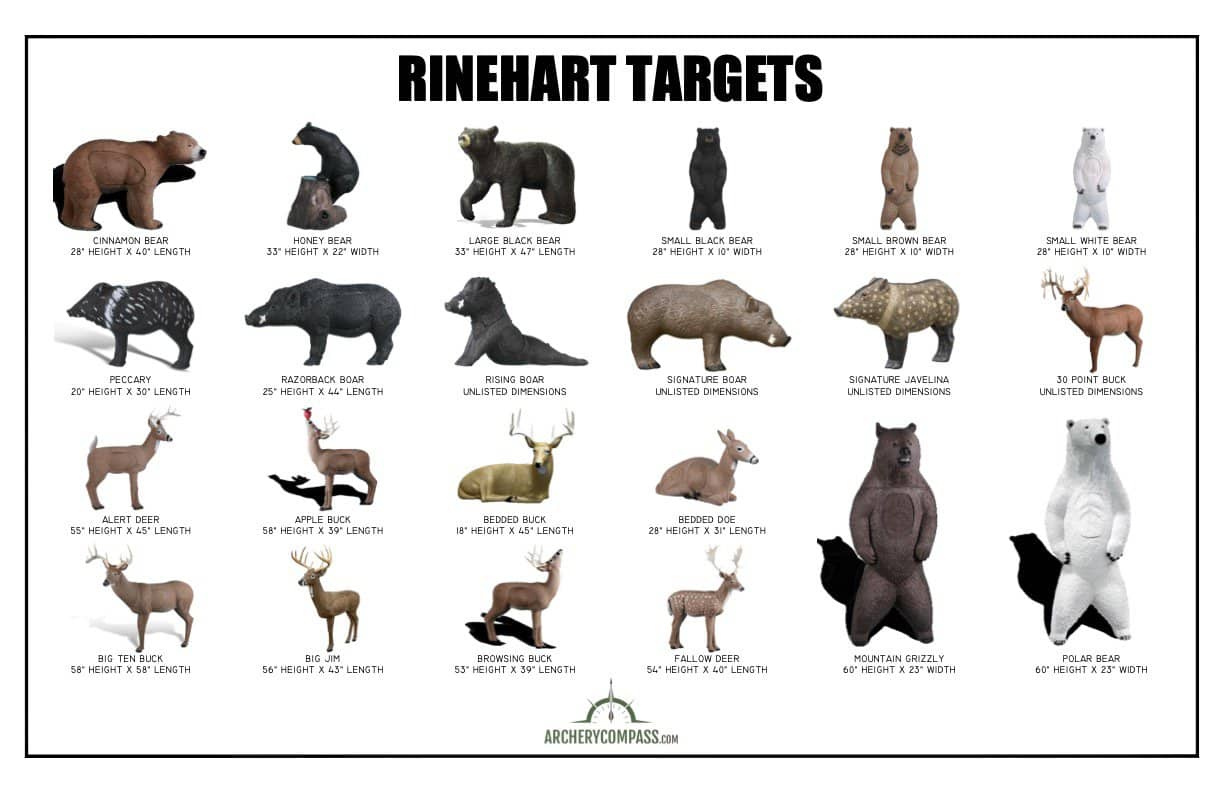

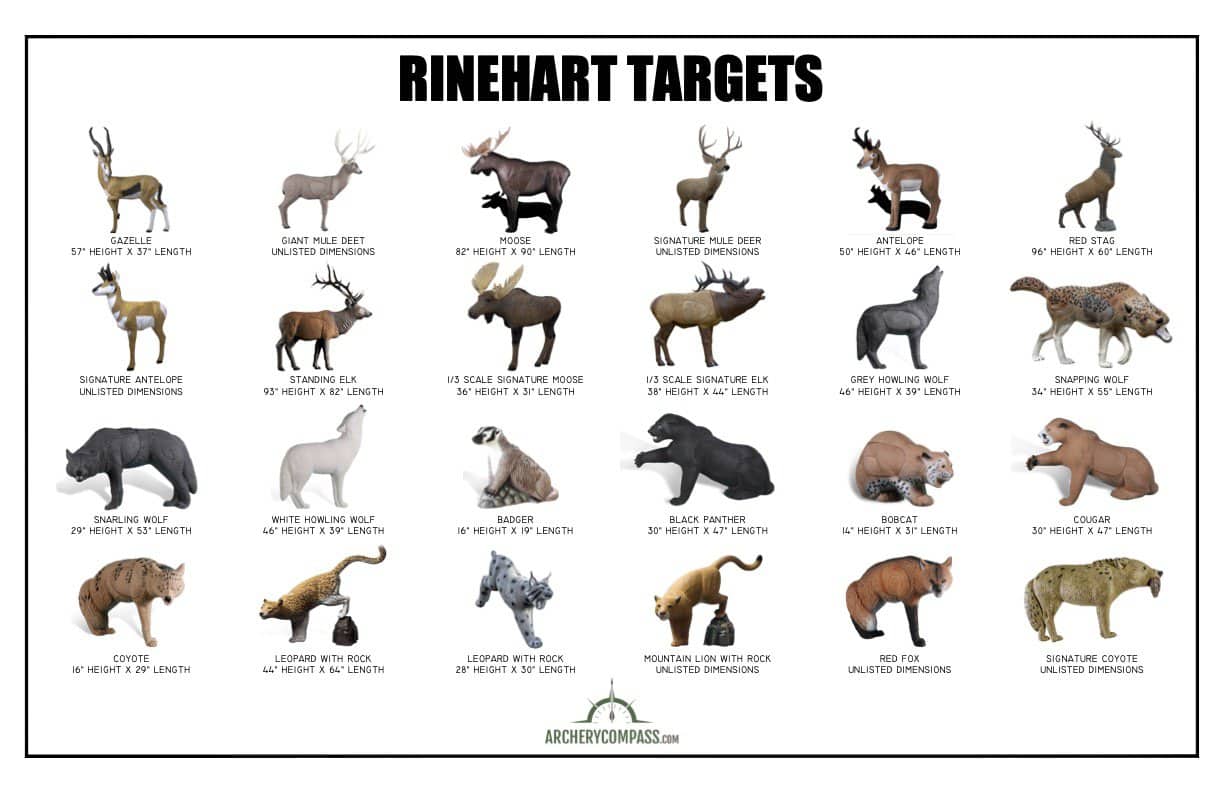
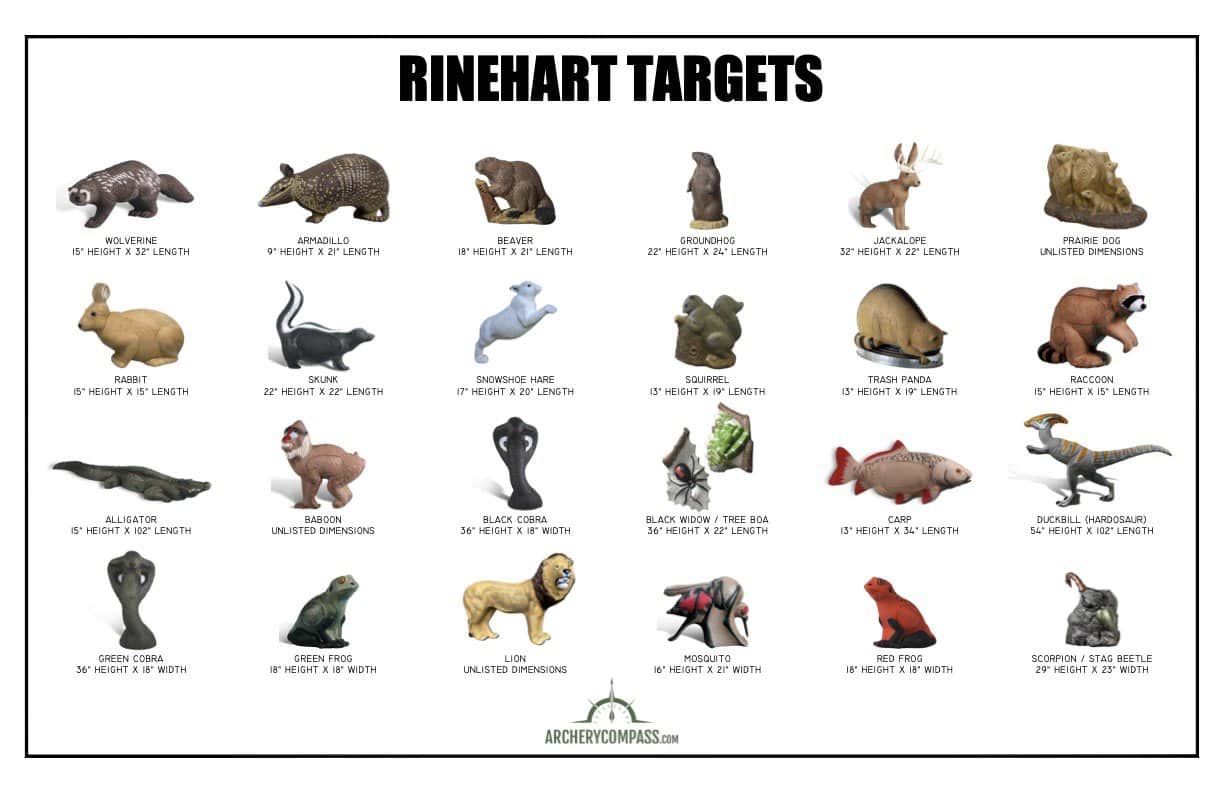

Standard Inserts
Standard Inserts on Rinehart Targets are marked for IBO Scoring with 11-Point, 10-Point, and 8-Point zones.

Universal Inserts
A selection of Rinehart Competition Series Targets is available with Universal Scoring Inserts. They include the IBO 11-point, 10-point, and 8-point zones and the ASA 14-point and 12-point zones. Please see the Universal Inserts below for visuals for Delta McKenzie and RealWild 3D Targets.
NASP Inserts
Six Rinehart Competition Series Targets (Listed Below) are available with NASP Scoring Inserts. These are similar to Standard IBO Inserts except that the center ring is larger than normal.
- Rinehart Alert Turkey
- Rinehart Coyote
- Rinehart Cinnamon Bear
- Rinehart Antelope
- Rinehart Alert Deer
- Rinehart Standing Stone Sheep

Delta McKenzie
Delta McKenzie manufactures various targets, including the Pro Series of 3D Archery Targets, used at many clubs nationwide. These targets feature a replaceable core of easy-pull foam for effortless arrow removal. Pro-Series Targets include universal scoring rings that can be used for both ASA and IBO Scoring.
In 2023, Delta McKenzie (formerly a division of Easton Archery) was acquired by Big Shot Targets LLC.

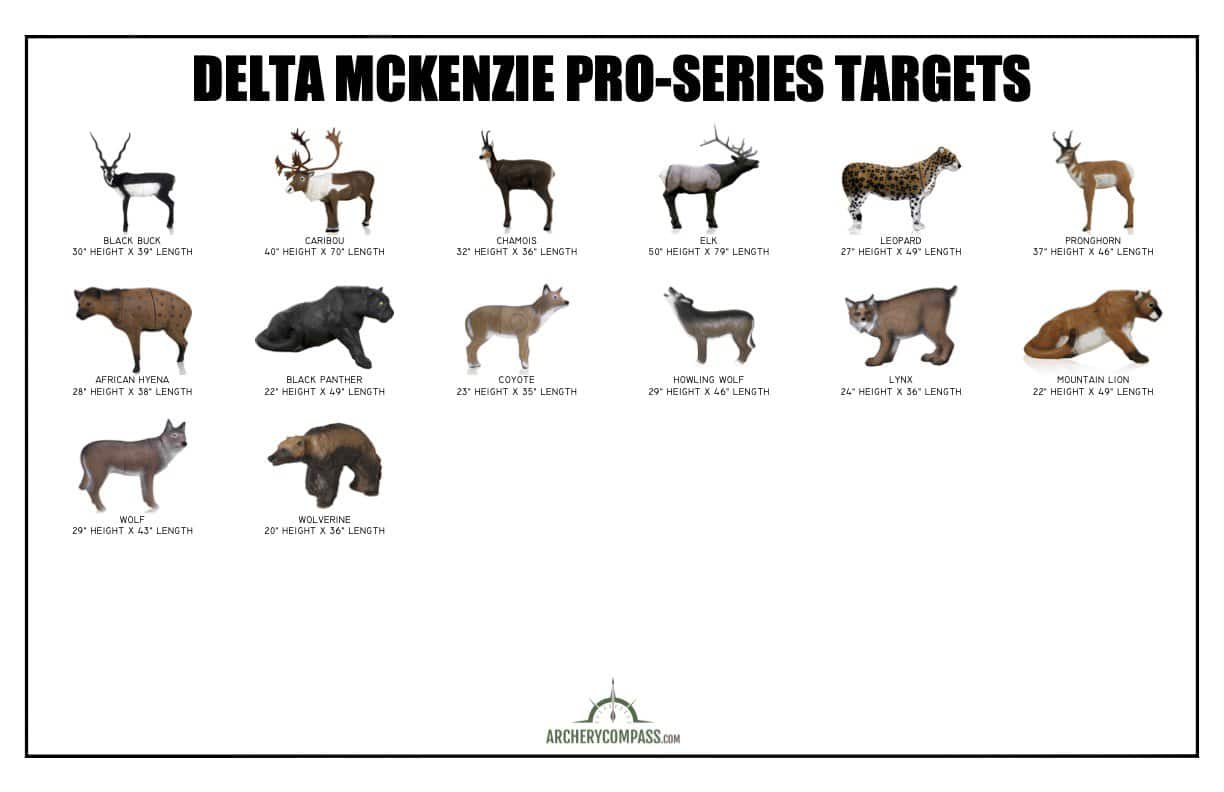
Universal Scoring Core
Delta McKenzie Pro-Series Targets are marked for Universal Scoring. They include the IBO 11-point, 10-point, and 8-point zones, as well as the ASA 14-point and 12-point zones.
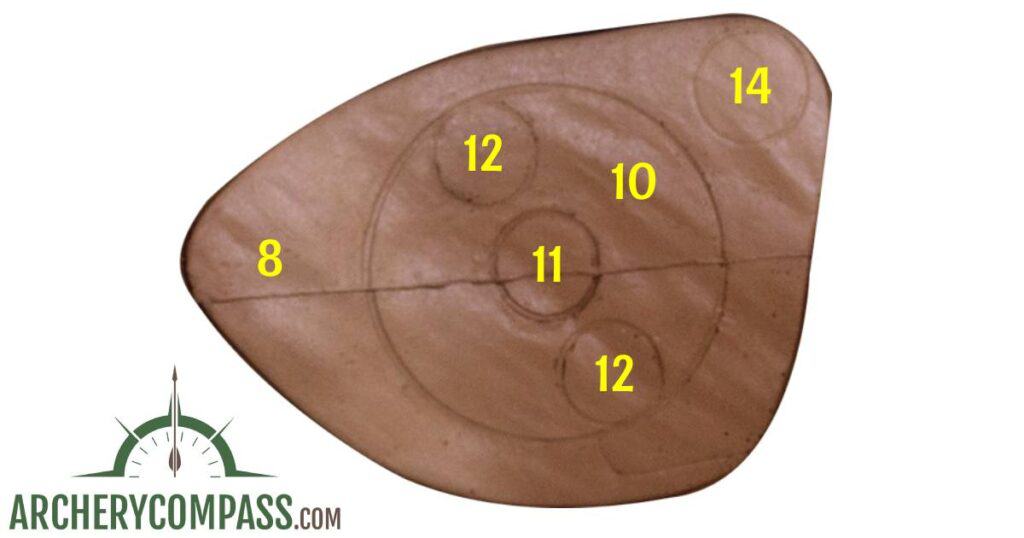
RealWild 3D
RealWild 3D (formerly R&W Targets) offers a variety of targets for Backyard and Competition use. Competition Series targets are available as multi-piece targets or with a Replaceable Core. RealWild 3D has a strong reputation for being an economical target, offering substantial value to individuals and archery clubs.
In 2016, R&W Targets joined Big Shot Archery LLC and became RealWild 3D.


Universal Scoring Vitals
RealWild 3D Competition Targets are marked for Universal Scoring. They include the IBO 11-point, 10-point, and 8-point zones with the addition of ASA 14-point and 12-point zones.


